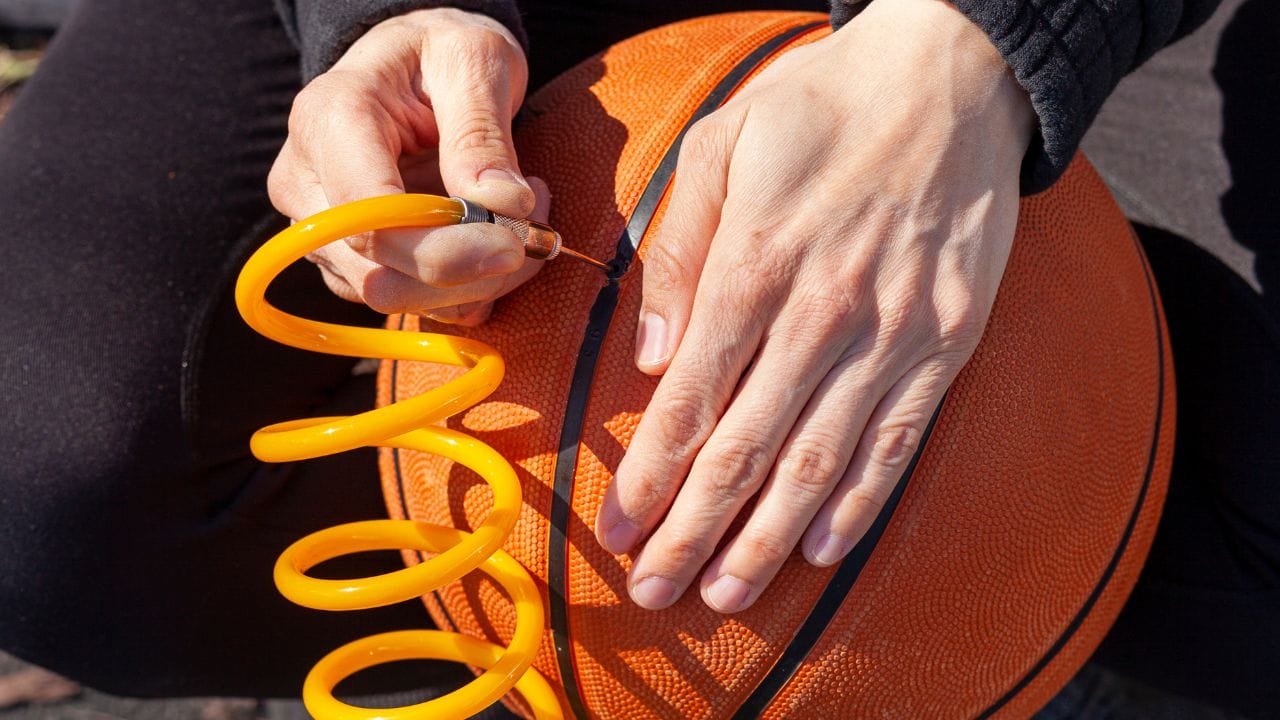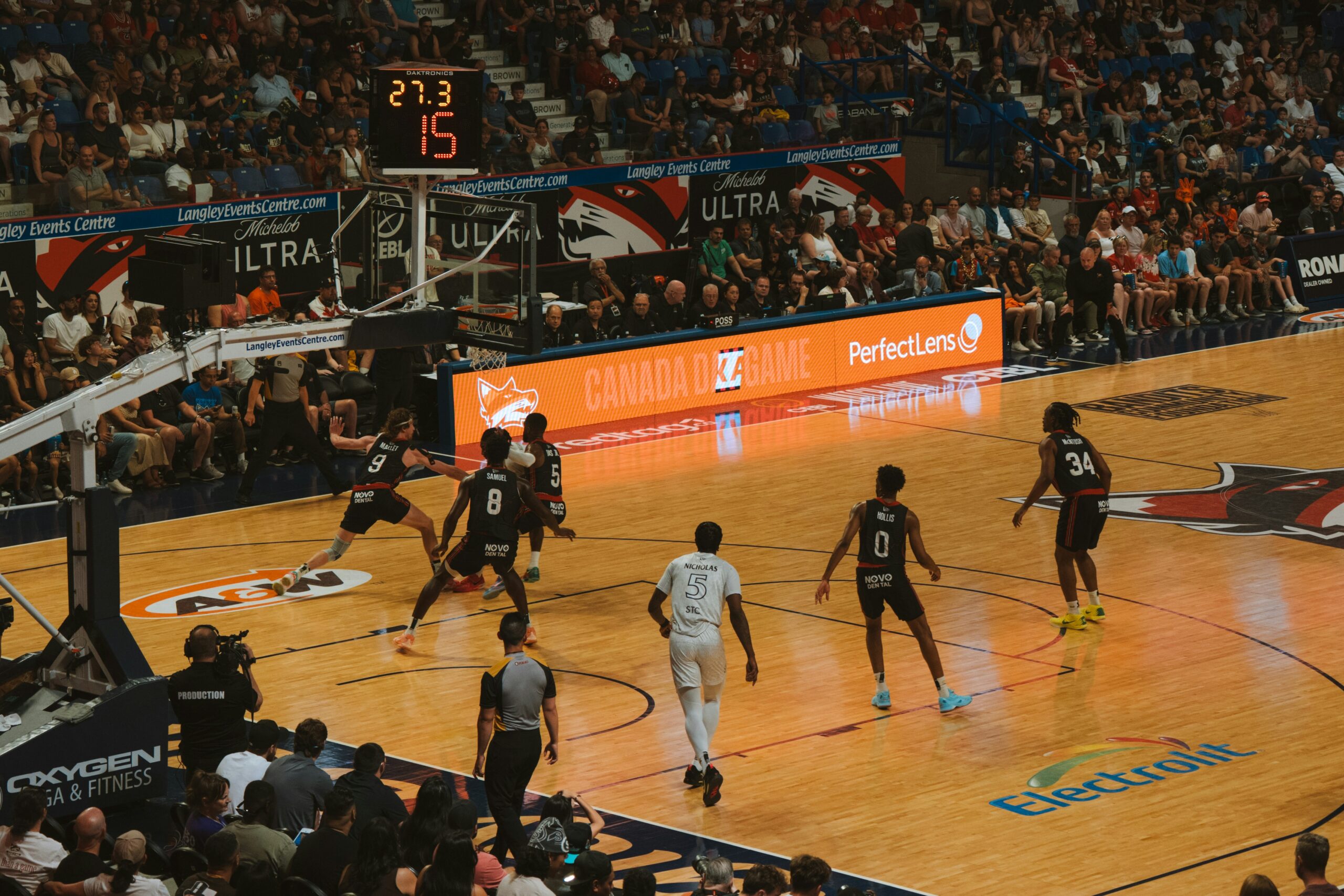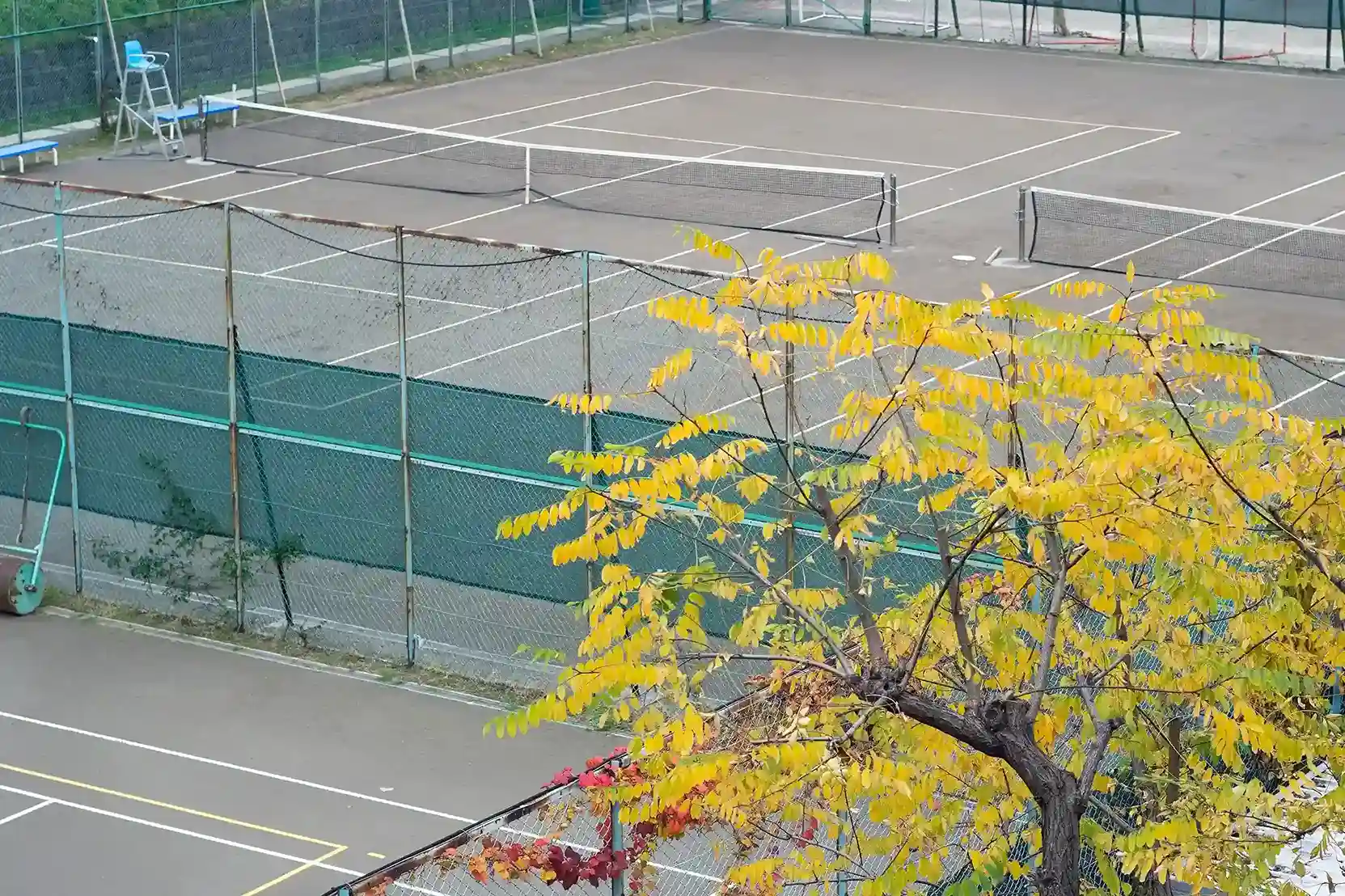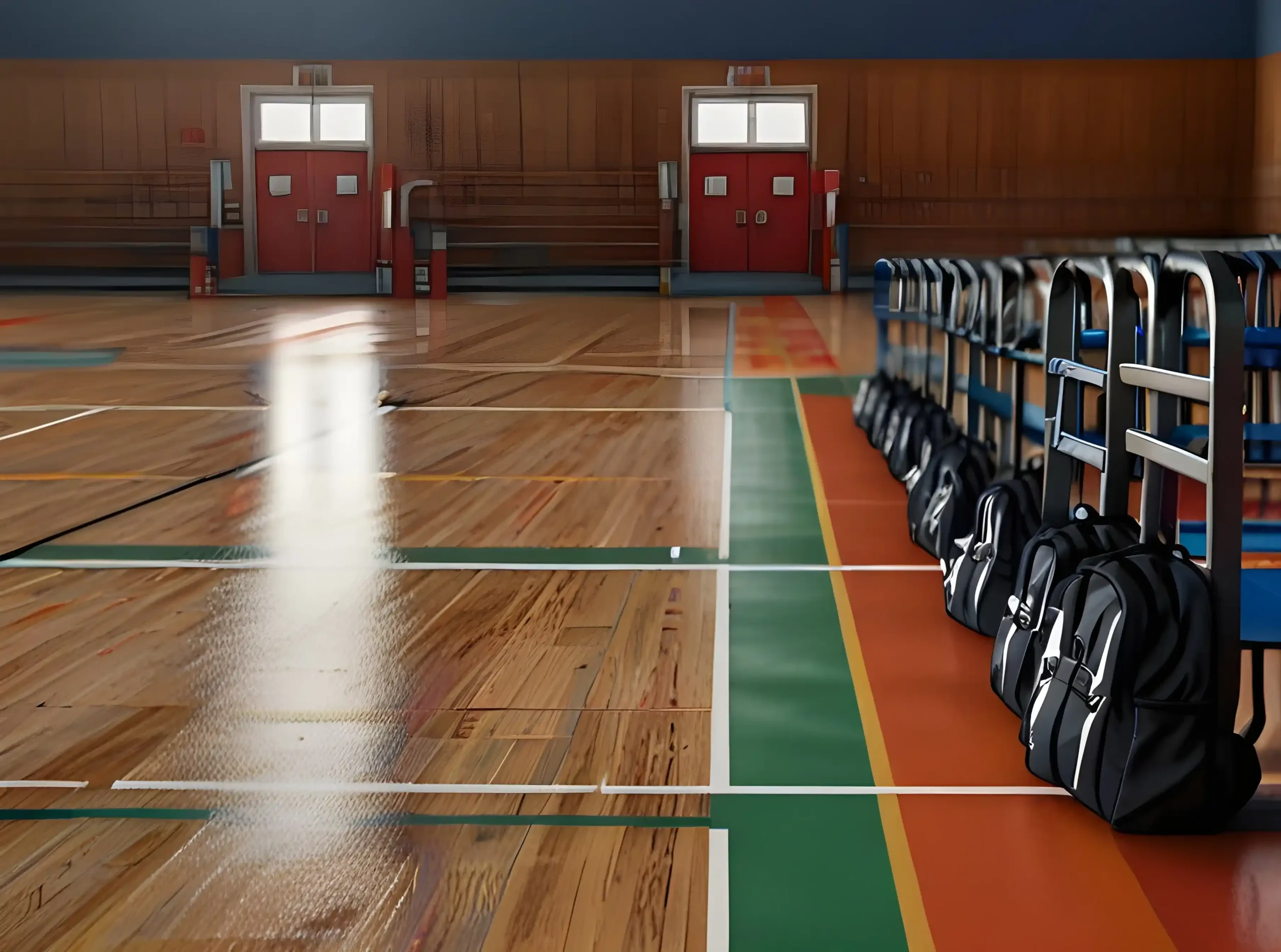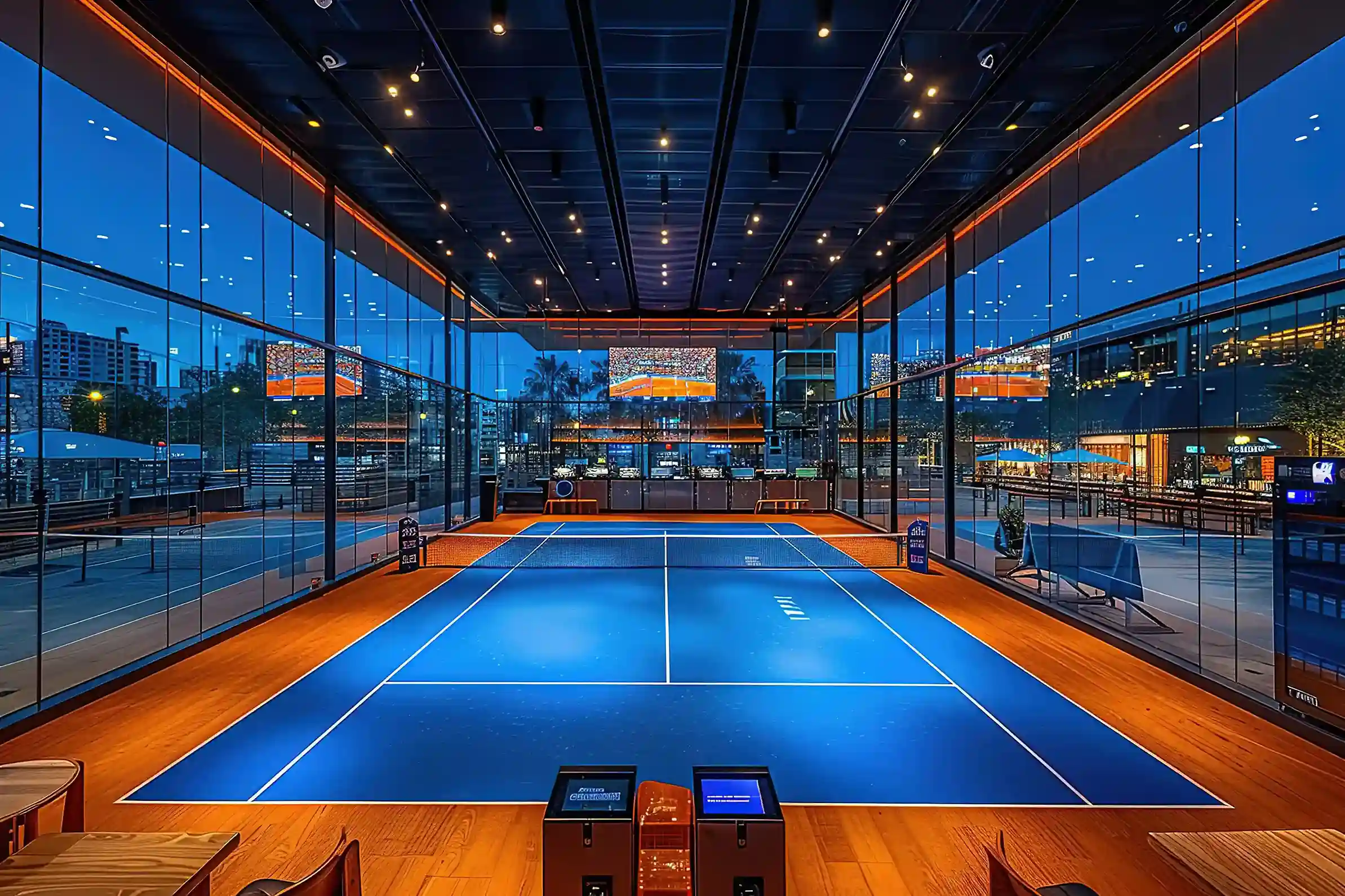When it comes to playing basketball, the air pressure in your ball can make all the difference in your performance. The right amount of air pressure allows for optimal ball control, shooting accuracy, and overall gameplay. However, many players overlook the importance of properly maintaining their basketball’s air pressure.
This blog post will explore the topic of basketball air pressure, including the recommended air pressure levels, the effects of underinflated or overinflated balls, and tips for maintaining the perfect air pressure for your basketball.
Properly inflated balls paired with appropriate court conditions ensure optimal performance, minimize player strain, and promote consistent gameplay. Check out VMKON Basketball court tiles for your Backyard Court.
Whether you’re a casual player or a serious athlete, understanding and managing basketball air pressure is essential for achieving peak performance on the court.
Understanding the Importance of Proper Air Pressure in Basketball
Proper air pressure in a basketball is crucial for optimal performance and player safety. Here are some reasons why maintaining the right air pressure is important:
1. Improved Bounce
The correct air pressure ensures that the basketball bounces predictably and consistently. If the ball is overinflated, it will bounce too high, making it difficult for players to control. On the other hand, if the ball is underinflated, it will have a reduced bounce, making it less responsive and affecting the overall gameplay.
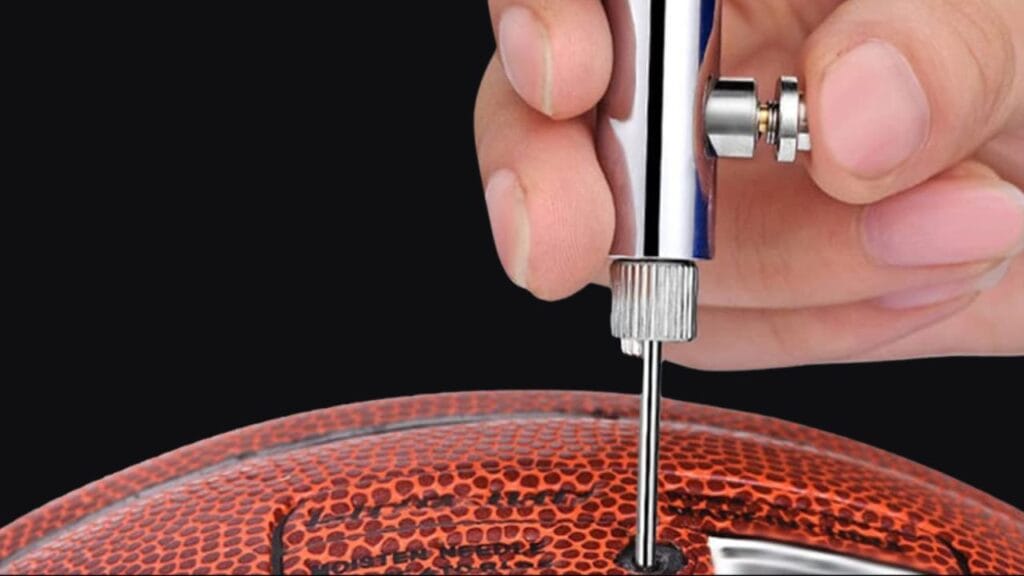

2. Enhanced Control
Maintaining the proper air pressure allows players to have better control over the ball. When dribbling, passing, or shooting, players rely on the ball’s grip and feel. With the right air pressure, players can have a good grip and manipulate the ball more effectively, leading to improved accuracy and performance.
3. Injury Prevention
Playing with an improperly inflated basketball can increase the risk of injuries. An overinflated ball can be harder and more challenging to catch, increasing the chances of jammed fingers or wrist injuries. On the other hand, an underinflated ball can be too soft, causing it to absorb more force during impacts and potentially leading to injuries like sprained ankles. Read More about inflating a basketball.
4. Consistency
By maintaining consistent air pressure, players can adapt to the ball’s characteristics and develop a consistent shooting and dribbling technique. This allows for muscle memory development and improves overall gameplay.
Inconsistent air pressure can lead to variations in the ball’s behavior, making it harder for players to adjust and perform consistently. To ensure proper air pressure in a basketball, it is recommended to follow the manufacturer’s guidelines or consult with a coach or experienced player.
Using a reliable pressure gauge is also essential to accurately measure the air pressure. Regularly checking and adjusting the air pressure will help maintain optimal performance and maximize player safety.
To maintain the proper air pressure in your basketball, it’s essential to use a reliable air pump with a pressure gauge. The recommended air pressure for basketballs typically ranges between 7.5 to 8.5 pounds per square inch (psi), but it’s always a good idea to check the manufacturer’s guidelines for specific recommendations.
How to Check and Maintain the Air Pressure in Your Basketball
Checking and maintaining the air pressure in your basketball is essential for ensuring optimal performance and longevity of the ball. Step-by-step instructions are below:
- Get a reliable pressure gauge: To measure the air pressure in your basketball accurately, you’ll need a pressure gauge specifically designed for sports balls. These gauges are readily available at sporting goods stores or online.
- Check the recommended pressure: The manufacturer specifies the range of air pressure for each basketball. It is usually printed on the ball itself or mentioned in the accompanying documentation. Typical pressure ranges for basketballs are between 7.5 and 8.5 psi (pounds per square inch).
- Prepare the ball: Make sure your basketball is clean and free from any debris or dirt. In case it needs to be cleaned, use a damp cloth.
- Insert the pressure gauge: Locate the air valve on the basketball. It is usually positioned near the inflation hole. Remove the valve cap and insert the pressure gauge into the valve.
- Read the pressure: Once the pressure gauge is inserted into the valve, it will display the air pressure reading. Ensure the gauge is properly aligned and steady to get an accurate reading.
- Adjust the air pressure: Compare the measured pressure to the recommended range for your basketball. If the pressure is too low, use an air pump with a needle attachment to add air. If the pressure is too high, use a deflation tool or the needle attachment of the pump to release some air.
- Recheck the pressure: After adjusting the air pressure, reinsert the pressure gauge into the valve and measure the pressure again to ensure it falls within the recommended range.
- Maintain proper storage: To maintain the air pressure in your basketball, store it in a cool and dry place. Extreme temperature changes can affect the air pressure, so avoid leaving it in a hot car or exposed to direct sunlight for extended periods.
- Regularly check the pressure: Make it a habit to periodically check the air pressure in your basketball, especially before important games or practices. This will help maintain consistent performance and prevent damage to the ball.
By following these steps, you can easily check and maintain the air pressure in your basketball, ensuring it performs optimally and lasts longer.
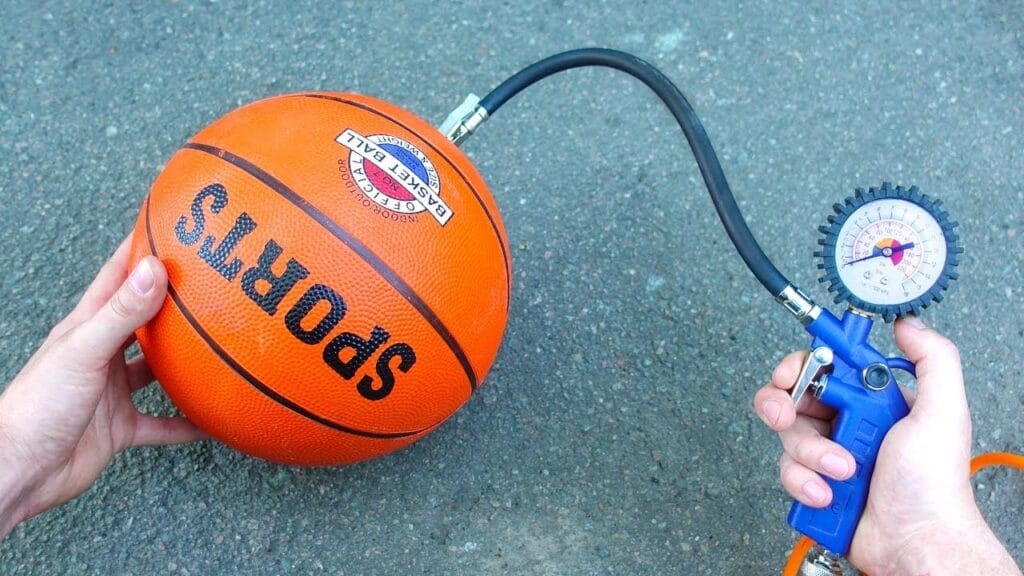

Click here to get your own desired basketball court.
The Effects of Overinflated and Underinflated Basketballs on Performance
Basketball is a sport that heavily relies on the characteristics of the ball for performance. The inflation level of a basketball can significantly impact the game, with both overinflated and underinflated balls having their own set of effects. Let’s explore these effects in more detail.
1. Overinflated Basketballs:
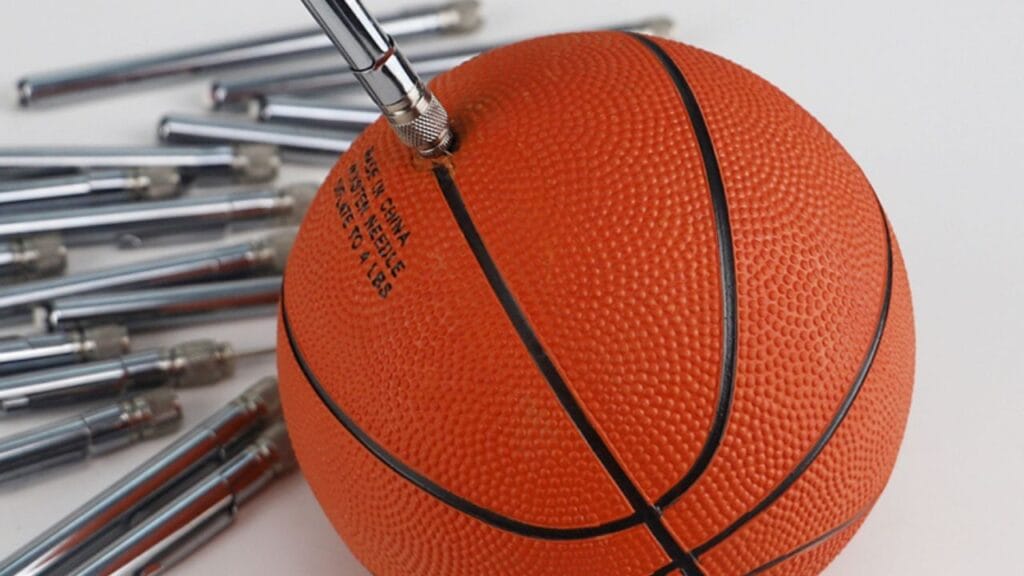

When a basketball is overinflated, it becomes harder and more rigid. This can have several effects on performance:
- Bounce: Overinflation reduces the ball’s ability to absorb impact, resulting in a higher and less predictable bounce. Players may struggle to control the ball, leading to more turnovers and decreased accuracy in shooting.
- Grip: An overinflated ball tends to be more slippery due to its increased rigidity. This can make it challenging for players to maintain a solid grip, potentially affecting their dribbling and passing skills.
- Shooting accuracy: The increased rigidity can also affect shooting accuracy. Overinflated balls tend to have a faster release, making it harder for players to control the speed and trajectory of their shots.
2. Underinflated Basketballs:
Conversely, when a basketball is underinflated, it becomes softer and less rigid. This, too, can have various effects on performance:
- Bounce: Underinflation reduces the ball’s rebounding ability, resulting in a lower and more unpredictable bounce. Players may find it harder to anticipate the ball’s movement, affecting their dribbling and timing.
- Grip: An underinflated ball can provide a better grip due to its softer texture. This can enhance a player’s ability to handle the ball, improving their dribbling and passing accuracy.
- Shooting accuracy: The softer texture of an underinflated ball can lead to a slower release, allowing players to have better control over their shots. However, due to the decreased rigidity, shooting range and power may be compromised.
It’s important to note that the optimal inflation level of a basketball is subjective and can vary based on individual preferences. The NBA recommends an inflation pressure of 7.5 to 8.5 pounds per square inch (psi) for official game balls. However, recreational players may have different preferences.
Tips for Maintaining Optimal Air Pressure in Your Basketball
Maintaining optimal air pressure in your basketball is crucial for optimal performance and longevity.
Here are some tips to help you keep the air pressure at the right level:
- Use a high-quality air pressure gauge: Invest in a reliable basketball air pressure gauge specifically designed for sports balls. This will ensure accurate readings and help you maintain the desired air pressure.
- Know the recommended air pressure: Check the manufacturer’s recommendations for the ideal air pressure range for your basketball. There is usually a range of 7.5 – 8.5 pounds per square inch (PSI).
- Regularly check the air pressure: Make it a habit to check the air pressure before each game or practice session. Over time, basketballs tend to lose air naturally, so regular monitoring is important.
- Inflate or deflate as needed: If the air pressure is too low, use a pump with a needle attachment to inflate the basketball. If it’s too high, use a pump with a needle to gently release some air until it reaches the desired level.
- Avoid extreme temperature changes: Extreme temperature fluctuations can affect the air pressure in your basketball. Keep it away from direct sunlight, heating vents, or cold surfaces to maintain a consistent air pressure.
- Store your basketball properly: When not in use, store your basketball in a cool and dry place. Avoid leaving it in a hot car or exposed to extreme temperatures for extended periods of time.
- Handle the basketball with care: Rough handling, excessive bouncing, or using the basketball on rough surfaces can cause damage and affect the air pressure. Treat your basketball with care to maintain its optimal performance.
Remember, maintaining the optimal air pressure in your basketball is essential for accurate shooting, dribbling, and overall game performance. By following these tips, you can extend the lifespan of your basketball and enjoy consistent performance on the court.
Conclusion
maintaining the proper air pressure in a basketball is essential for optimal performance and player safety. It is recommended that basketballs have an air pressure of between 7.5 and 8.5 pounds per square inch (psi).
It is important to regularly check and adjust the air pressure to ensure the ball bounces correctly and handles well. By properly maintaining the air pressure in your basketball, you can enhance your game and prevent injuries.
Frequently Asked Questions
What is the Air Pressure of Basketball?
There is usually 7.5 to 8.5 pounds per square inch (psi) of air pressure in a basketball. This range is recommended by most basketball manufacturers for optimal performance and bounce. It’s important to check the pressure regularly to ensure that the ball maintains its shape and responsiveness.
How Many PSI Should a Basketball Be?
When it comes to basketball, the recommended PSI (pounds per square inch) for a standard basketball is typically between 7.5 and 8.5. This range ensures that the ball has the right level of bounce and responsiveness for a great game.
Does Air Pressure Affect the Bounce of a Basketball?
Absolutely air pressure definitely affects the bounce of a basketball. When a basketball is properly inflated, it bounces more predictably and consistently. On the other hand, if it’s underinflated, it won’t bounce as high, and if it’s overinflated, it can bounce too much. So, maintaining the right air pressure is key for getting that perfect bounce.

